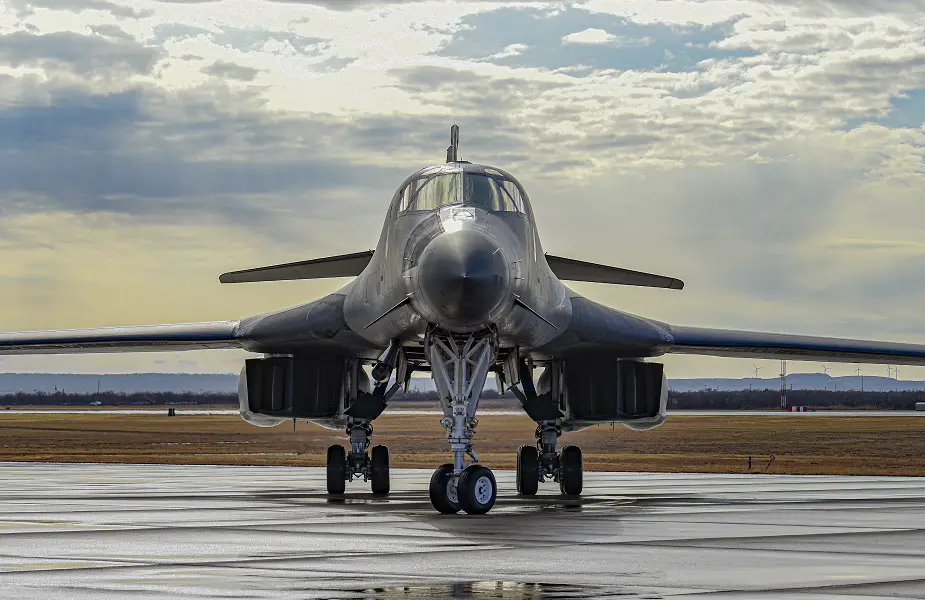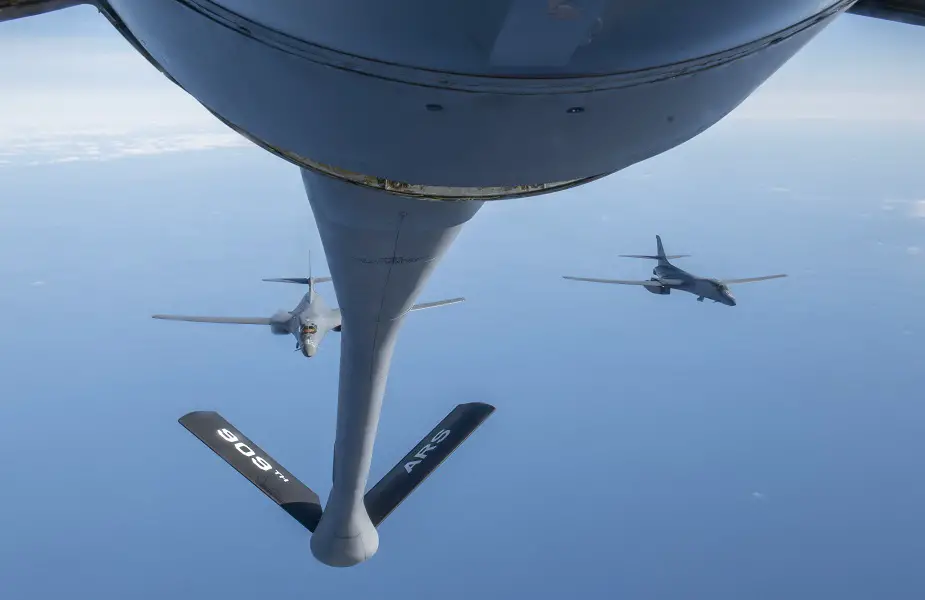Breaking news
US 53rd Wing bomber test avionics software update.
The 337th Test and Evaluation Squadron completed a test of the Sustainment Block-18 avionics software during a U.S. Strategic Command Bomber Task Force mission Jan. 11.
Follow Air Recognition on Google News at this link
 A B-1B Lancer taxis on the flightline after completing a Continental United States to Continental United States joint Large Force Exercise alongside the Japanese Air Self-Defense Force at Dyess Air Force Base, Texas, Jan. 11, 2022. They executed a 30 hour two-ship CONUS to CONUS mission (Picture source: USAF)
A B-1B Lancer taxis on the flightline after completing a Continental United States to Continental United States joint Large Force Exercise alongside the Japanese Air Self-Defense Force at Dyess Air Force Base, Texas, Jan. 11, 2022. They executed a 30 hour two-ship CONUS to CONUS mission (Picture source: USAF)
The unit also achieved long-range communications using the Joint Range Extension Applications Protocol during the sortie in the Indo-Pacific Command area of responsibility,
The mission was flown in conjunction with the 7th Bomb Wing, and marks the first time a BTF sortie was supported by operational test aircraft and aircrew.
As part of the sensors forward initiative, which uses updated software and processes to leverage resident B-1 Electronic Warfare capability, Sustainment Block-18 is the next major avionics software update for the B-1 fleet.
Two of the primary features of the avionics software update include simplified sensor control and targeting, as well as re-hosting many of the defense features on newer displays that improve situational awareness. During the mission, the profile demonstrated a number of efficiencies compared to the previous software.
 Two B-1 Lancers from the 7th Bomb Wing fly behind A KC-135R Stratotanker after receiving fuel over the Pacific Ocean during a Bomber Task Force deployment, Jan. 11, 2022. A BTF deployment of U.S. Air Force B-1 Lancers, Airmen and support equipment from the 7th Bomb Wing, Dyess Air Force Base, Texas, coordinated with the 909th Air Refueling Squadron to support Pacific Air Forces’ training efforts with allies, partners, and joint forces and strategic deterrence missions to reinforce the rules-based international order in the Indo-Pacific region (Picture source: USAF)
Two B-1 Lancers from the 7th Bomb Wing fly behind A KC-135R Stratotanker after receiving fuel over the Pacific Ocean during a Bomber Task Force deployment, Jan. 11, 2022. A BTF deployment of U.S. Air Force B-1 Lancers, Airmen and support equipment from the 7th Bomb Wing, Dyess Air Force Base, Texas, coordinated with the 909th Air Refueling Squadron to support Pacific Air Forces’ training efforts with allies, partners, and joint forces and strategic deterrence missions to reinforce the rules-based international order in the Indo-Pacific region (Picture source: USAF)
“Flying for a duration of this length is invaluable when it comes to stressing the software system,” said Maj. Matthew Sutton, 337th TES test director. “Prior to the sortie we had executed tests at continental U.S. ranges, but ideally we want to test an operational environment so we can see just how far we can push the system.”
During the mission, the 337th TES integrated with the Dyess’ Live Mission Operation Center, who handles the line of sight and beyond line of sight communications in order to capture the usability of JREAP-A, on missions crossing certain AOR’s and at various latitudes.
By demonstrating connectivity throughout various points on the mission, the bomber units were able to capture the results for integration into aircrew academics and determine usability for the crew force and best practices for future long-duration mission command and control.
“There’s no better way to demonstrate our tests are meeting the needs of the warfighter than by integrating the bomber OT mission directly with current operational taskings,” said Col. Jaime Hernandez, 753rd Test and Evaluation Group commander.
The 337th TES is a geographically separated unit of the 53rd Wing headquartered at Eglin Air Force Base, Florida.
 A B-1 Lancer from the 7th Bomb Wing departs after receiving fuel over the Pacific Ocean during a Bomber Task Force deployment, Jan. 11, 2022. A BTF deployment of U.S. Air Force B-1 Lancers, Airmen and support equipment from the 7th Bomb Wing, Dyess Air Force Base, Texas, coordinated with the 909th Air Refueling Squadron to support Pacific Air Forces’ training efforts with allies, partners, and joint forces and strategic deterrence missions to reinforce the rules-based international order in the Indo-Pacific region (Picture source: USAF)
A B-1 Lancer from the 7th Bomb Wing departs after receiving fuel over the Pacific Ocean during a Bomber Task Force deployment, Jan. 11, 2022. A BTF deployment of U.S. Air Force B-1 Lancers, Airmen and support equipment from the 7th Bomb Wing, Dyess Air Force Base, Texas, coordinated with the 909th Air Refueling Squadron to support Pacific Air Forces’ training efforts with allies, partners, and joint forces and strategic deterrence missions to reinforce the rules-based international order in the Indo-Pacific region (Picture source: USAF)

























